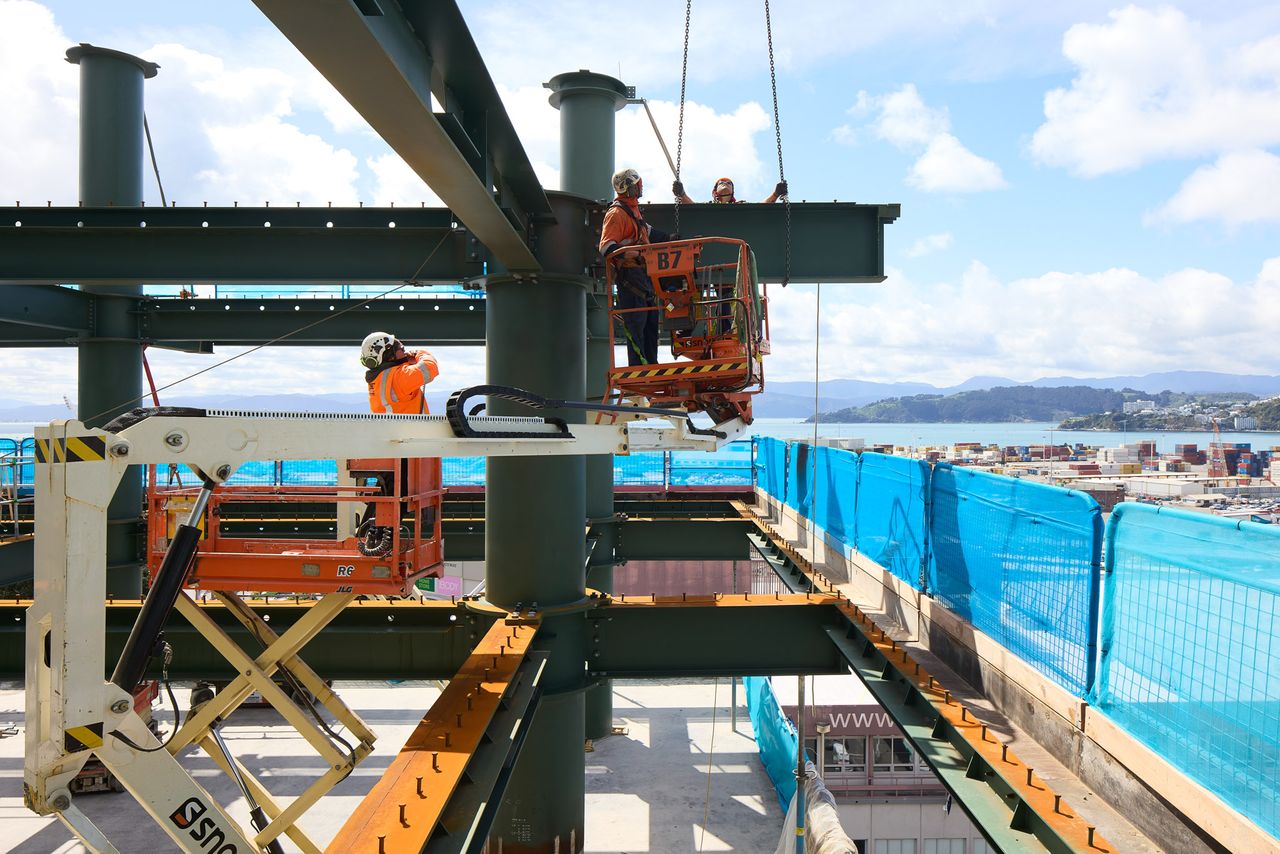News & Insights
Shaping a Sustainable Future
Date
- 2024 October

The unveiling of the new Destination Skatepark in Mount Maunganui wasn't just a cause for celebration among skaters but a significant milestone in sustainable construction in Tauranga.
This innovative skate park is home to a one-of-a-kind 3D-printed skate feature, 'The Wave,' a nearly 12m long, 3m high, 3D-printed skateable feature, one of five such elements developed by Hamilton-based company QOROX. The Wave is constructed in seven separate segments, taking around five hours to print. Once printed, it was transported to the site where it was pieced together and infilled with concrete, creating the world's largest 3D skate sculpture[1].
The application might seem niche, but it holds considerable potential for the future of sustainable construction methodologies.
 The Environmental Shadow of Construction
The Environmental Shadow of Construction
According to the World Green Building Council, buildings account for nearly 40% of global energy consumption and 36% of final energy use.[2] Traditional construction methods also generate significant waste, with estimates suggesting demolition and construction debris alone account for roughly a third of all solid waste in landfills.
These numbers create a picture of an industry desperately needing transformation for long-term sustainability. 3D printing technology offers a practical solution in specific instances, providing a more environmentally friendly approach to construction for formed concrete components.
Beyond Novelty: The Advantages of 3D Concrete Printing
At its core, 3D printing works by depositing material layer-by-layer to create a 3D object based on a digital model. This method provides several sustainable benefits:
Reduced Material Waste - Traditional concrete work often results in over-ordering and generates additional waste material, such as formwork. 3D printing, on the other hand, uses a precise additive process, which minimises waste by using only the required amount of material. Studies suggest that 3D printing can reduce material waste by up to 70% compared to conventional methods.[3]
Lower Carbon Footprint - Using specially formulated, low-carbon concrete mixtures in 3D printing significantly reduces a structure's carbon footprint. These materials are specifically designed to require less energy during production, leading to a lower overall carbon impact. For example, the Mount Maunganui skatepark's 3D-printed features resulted in a 30% reduction in emissions compared to traditional concrete.[4]
Enhanced Design Flexibility - 3D printing allows for complex shapes and organic designs that would be challenging to achieve using conventional methods. This flexibility also creates possibilities for new construction components, such as energy-efficient buildings, that include integrated insulation and services within walls or other built-in features optimising natural light and ventilation.
Reduced Onsite Disruption - 3D printing is highly automated and can be conducted off-site, reducing the need for heavy machinery and extensive labour and minimising noise, dust, and disruption to surrounding areas.
Potential for On-demand Construction - The future of 3D printing in construction could involve on-demand manufacturing of non-structural components, which is particularly beneficial in remote or disaster-stricken areas where traditional methods are more challenging.
Challenges and Considerations
While 3D printing has great potential within construction, there are challenges to address as the technology evolves. Currently, the cost of 3D-printed concrete material is higher than traditional methods, though this is expected to decrease over time as the technology matures. Procuring specialised machinery brings another hurdle, as these machines are expensive and not widely available.
Additionally, site-based applications introduce complexities like weather, terrain, and space limitations that affect machinery performance if completed solely onsite. Finally, maintaining consistent quality control is essential to ensure the structural integrity of 3D-printed components, particularly as the technology is adapted for large-scale projects.
The Future
Imagine a future where buildings and their components are constructed with minimal waste, using eco-friendly materials and designs optimised for energy efficiency. This vision is not far off, with the continued development of 3D printing technology and its continued use at a local scale.
The Mount Maunganui skatepark serves as a testament to these exciting possibilities. To shape a future where the built environment harmonises with the natural world, we must continue to embrace innovation. As companies such as QOROX push the boundaries of what is possible, we should explore how these developing technologies can be integrated into our workstream. As leaders within the property and infrastructure sectors, we should ask ourselves how we can encourage that innovation and its adoption where appropriate to allow for the development of 3D printing's (or other innovations) full potential in construction.
By doing so, we will begin to work towards reversing the negative environmental externalities our industry generates and leave a positive legacy for generations to come.
[1] https://qorox.co.nz/news-and-media/destination-skatepark-features-3d-printed-skateable-sculptures/
[2] https://worldgbc.org/advancing-net-zero/embodied-carbon/
[3] https://qorox.co.nz/why-qorox/
[4] https://www.nzherald.co.nz/nz/mount-maunganui-skatepark-3d-printed-skateable-features-part-of-new-park-opening-this-week


